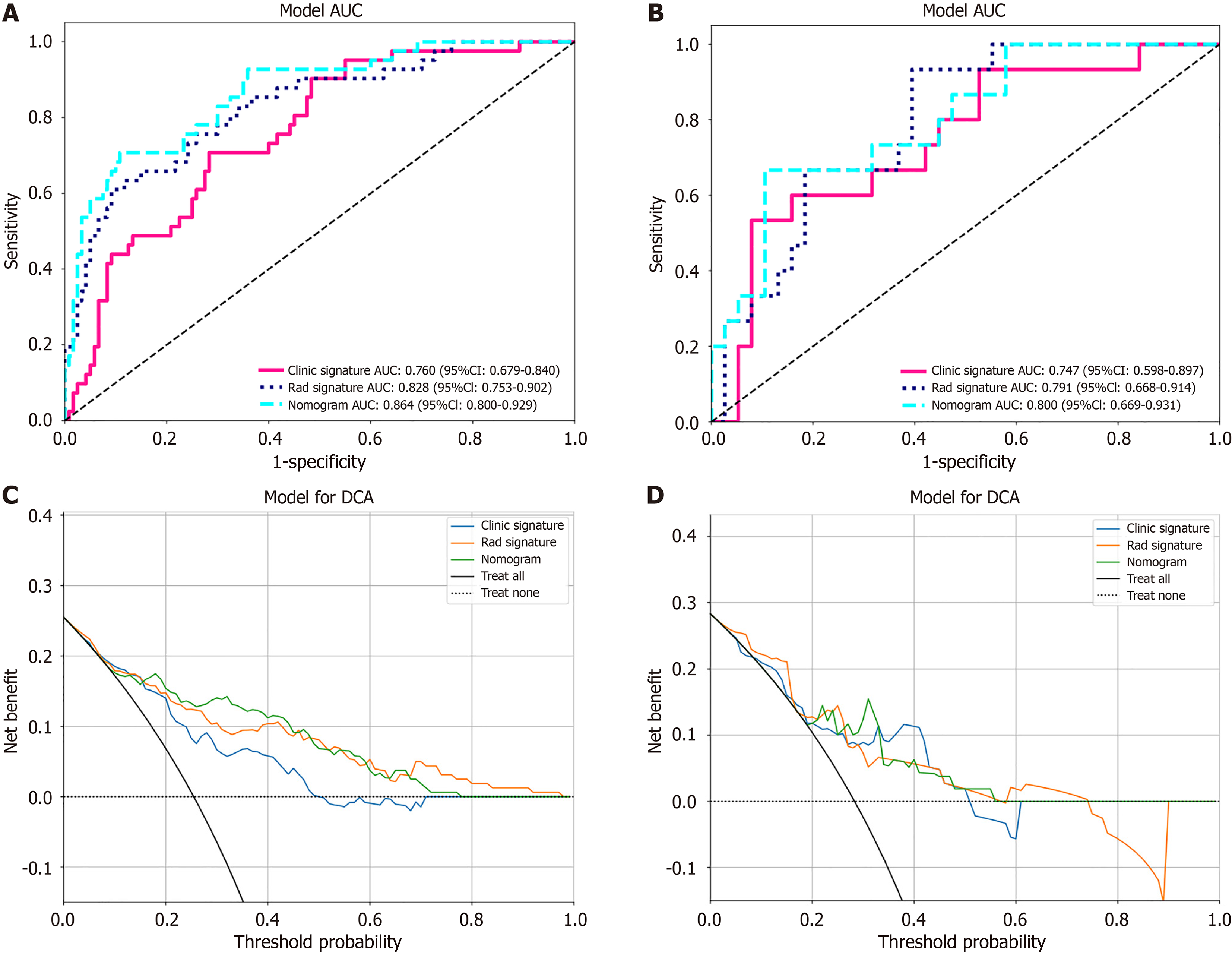Copyright
©The Author(s) 2025.
World J Gastrointest Surg. Jun 27, 2025; 17(6): 106155
Published online Jun 27, 2025. doi: 10.4240/wjgs.v17.i6.106155
Published online Jun 27, 2025. doi: 10.4240/wjgs.v17.i6.106155
Figure 4 Receiver operating characteristic curves and decision curve analysis.
A and B: Receiver operating characteristic curves for the clinical factor model, the radiomic signature, and the radiomic nomogram in the training sets (A) and test sets (B); C and D: Decision curve analysis for the radiomic nomogram model in the training (C) and test (D) sets. AUC: Area under the curve; CI: Confidence interval; DCA: Decision curve analysis.
- Citation: Li DL, Zhu L, Liu SL, Wang ZB, Liu JN, Zhou XM, Hu JL, Liu RQ. Machine learning-based radiomic nomogram from unenhanced computed tomography and clinical data predicts bowel resection in incarcerated inguinal hernia. World J Gastrointest Surg 2025; 17(6): 106155
- URL: https://www.wjgnet.com/1948-9366/full/v17/i6/106155.htm
- DOI: https://dx.doi.org/10.4240/wjgs.v17.i6.106155









